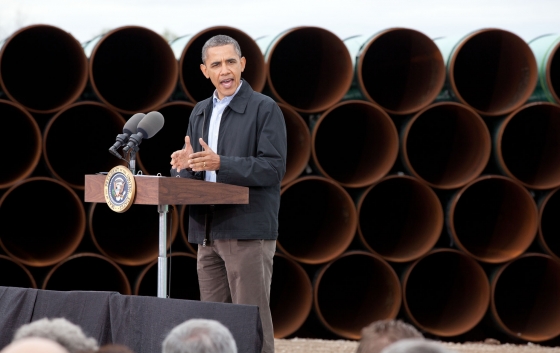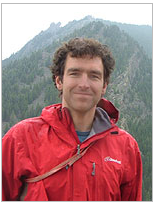In a major ruling that’s flown under the radar, the U.S. Court of Appeals for the Tenth Circuit – based in Denver, Colorado – decided not to grant the Sierra Club and Clean Energy Future Oklahoma a temporary injunction on the construction of the southern half of Transcanada’s Keystone XL tar sands export pipeline.
The Court’s decision hinged on an “injury” balancing test: Would Transcanada be hurt more financially from receiving an injunction? Had it lost, it would be stuck with one until Sierra Club, et al receive a U.S. District Court decision on the legality of the U.S. Army Corps of Engineers’ decision to grant Transcanada a Nationwide Permit 12 (NWP 12) for construction of what’s now called the Gulf Coast Pipeline in February 2012.
Or would ecosystems suffer even greater and potentially incalculable damage from the 485-mile, 700,000 barrels per day pipeline crossing 2,227 streams?
In a 2-1 decision, the Court sided with Transcanada, and by extension, the U.S. Army Corps of Engineers. The Court ruled, “the threatened environmental injuries were outweighed by the financial harm that the injunction would cause Transcanada.”
Commenting on the case brought by Sierra Club, et al, Judge Jerome A. Holmes and Judge Paul J. Kelly, Jr. – appointees of President George W. Bush and President George H.W. Bush, respectively – shot down the arguments sharply.
U.S. Appeals Court for the 10th Circuit Judge Jerome A. Holmes; Photo Credit: The White House
Holmes and Kelly ruled that Sierra Club, et al failed to show how the pipeline will have a significant environmental impact despite the fact it’s been deemed a “fuse to the biggest carbon bomb on the planet” by retired NASA climate scientist James Hansen.
Construction of Keystone XL‘s southern half – subject of significant grassroots activism by the Tar Sands Blockade and others – is now nearly complete. Tar sands dilbit is slated to begin to flow through it in early 2014.
NWP 12: “New Normal” for Tar Sands Pipeline Approval
After protestors succeeded initially in delaying Keystone XL, Big Oil has chosen a “new normal” stealth approval method: the non-transparent NWP 12.
This avoids the more strenuous National Environmental Protection Act permitting process overseen by the Environmental Protection Agency (EPA), which requires public hearings and public comments for major federal pipeline projects. NEPA compels the EPA to take comments into account in response throughout the Environmental Impact Statement phase, allowing robust public participation in the process.
Sierra Club Staff Attorney Doug Hayes explained in an interview with DeSmogBlog that NWP 12 is for utility projects with up to a half an acre of stream or wetland impacts, and has never been used for tar sands pipelines before Keystone XL‘s southern half.
The southern half of the pipeline was approved via Executive Order by President Barack Obama in March 2012, directly after Obama gave a speech in front of a Cushing, OK pipeyard.
President Barack Obama speaks in Cushing, OK in March 2013; Photo Credit: White House
“The Corps is abusing the nationwide permit program. Nationwide permits were intended to permit categories of projects with truly minimal impacts, not tar sands oil pipelines crossing several states,” said Hayes.
Utilizing tricky legal loopholes, Transcanada used NWP 12 to push through Keystone XL‘s southern half in February 2012, calling each half acre segment of Keystone XL‘s southern half a “single and complete project.” The Army Corps of Engineers agreed despite the fact that Transcanada refers to the pipeline at-large as the “Gulf Coast Pipeline project.”
“What the Corps is doing is artificially dividing up these massive pipelines, treating them as thousands of individual projects to avoid environmental review,” Hayes explained. “In this case, there were 2,227 crossings of federal waterways, so the Corps has treated the Gulf Coast Pipeline as 2,227 ‘single and complete projects,’ each of which qualifies under NWP 12.”
Sierra Club Staff Attorney Doug Hayes; Photo Credit: Sierra Club
Why, I asked Hayes?
“The Corps artificially treats these massive pipelines as thousands of individual projects so as to qualify under NWP 12 and avoid NEPA compliance.”
NWP 12 has also been utilized by Enbridge for the Flanagan South Pipeline, a 600-mile, 600,000 barrels per day pipeline set to shuttle tar sands crude from Flanagan, IL to Cushing, OK, crossing over 2,000 streams. That pipeline is scheduled to begin operations in mid-2014, demonstrating how NWP 12 is the “new normal” way to fast-track domestic tar sands pipelines.
Dissent: Laws Violated, Economic Harm Transcanada’s Fault
Perhaps the biggest irony of the Appeals Court decision is that Judges Holmes and Kelly barely grappled with the central issue of the legal challenge to begin with: using NWP 12 rather than going through the NEPA process.
“The majority opinion avoided addressing the legal questions that are central to this lawsuit – whether the Corps violated the law in permitting this pipeline – and instead it was based on how much money a delay in construction would cost TransCanada,” said Hayes.
Though Judges Holmes and Kelly stayed mum about these issues, dissenting U.S. District Court for the District of Colorado Judge William Martínez – an Obama appointee – did not, pulling no punches in doing so.
U.S. District Court for the District of Colorado Judge William Martínez; Photo Credit: Judgepedia
“Given the totality of the circumstances…I believe the…Gulf Coast Pipeline required a comprehensive NEPA analysis,” Martínez wrote.
“There are also no specific findings in support of the Corps’ conclusion that the Gulf Coast Pipeline, as a whole, would have minimal cumulative impact. The failure to consider the cumulative effects of all of the water crossings involved in the Gulf Coast Pipeline violates the terms of NWP 12, and, therefore, the approval of the use of NWP 12 for construction of the Gulf Coast Pipeline violated the law.”
Though Judges Holmes and Kelly grappled with the issue of water crossings – belittling the amount of water Keystone XL‘s southern half would cross over – Martínez said it’s about much more than just water.
There is “real and signifcant harm caused by the actual construction of the pipeline, including the clearing of trees and vegetation, removing topsoil, filling wetlands, building access roads, and clearing an eighty-five foot construction right-of-way for the length of the pipeline,” he stated.
Hayes agreed with this assessment, pointing to examples of things the Judges simply ignored in their assessment.
“[T]he court’s balancing test ignored the host of environmental impacts associated with this pipeline, including the risks of tar sands oil spills,” said Hayes.
“Remember that the 2010 tar sands pipeline spill in Michigan is still being cleaned up, and so far has cost over a billion dollars. It’s a bit of a Catch-22 to say that this is all just about a few acres of wetlands loss, when the whole point of this lawsuit is that the Corps avoided analyzing any of the pipeline’s environmental impacts as required by NEPA.”
Lastly, Martínez put the onus on Transcanada for its economic decision-making.
“Transcanada chose to incur its economic harm by entering into contracts for services before the Gulf Coast Pipeline was approved, even in light of the controversial nature of the Pipeline,” said Martínez (emphasis his).
U.S. District Court Decision Forthcoming, Activism Persists
Sierra Club, et al now await a summary judgment from the U.S. District Court for the District of Colorado on whether Keystone XL failed the dictates of NEPA. It’s a key decision, Hayes says, because “a ruling in our favor could prevent the Corps from doing this in the future.”
While they await this lower court judgment, activists continue efforts to fend off these pipeline projects.
“This decision yet again demonstrates why direct action is necessary. The permitting process for Keystone XL‘s southern leg was illegal, yet regulators, inspectors, Obama, and the courts are failing to do what is necessary to protect the people and ecosystems threatened by this toxic pipeline,” said Ron Seifert, a Tar Sands Blockade spokesman.
“If all the branches of government are so helplessly captured by industry that they will do nothing to stave off climate change, then the people must rise up and take the defense of the environment into their own hands.”
Photo Credit: tankist276 | ShutterStock
Subscribe to our newsletter
Stay up to date with DeSmog news and alerts










